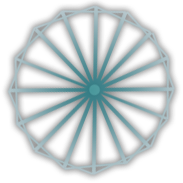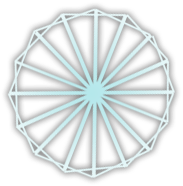October 27:
 “Service which is rendered without joy helps neither the servant nor the served. But all other pleasures and possessions pale into nothingness before service which is rendered in a spirit of joy.”
“Service which is rendered without joy helps neither the servant nor the served. But all other pleasures and possessions pale into nothingness before service which is rendered in a spirit of joy.”
–Gandhi (Autobiography)
As a very novice weaver, I get to admire Gandhi from a slightly different angle, because beyond everything else he accomplished spiritually and politically, he was a spinner and a weaver. In short: a textile artist. It’s a wonderful feeling to get up from a long session of concentration at the loom and look at the famous photo of Gandhi with the charkha (spinning wheel). The connection deepens. He wanted to revive these arts to help propel the economic independence of India toward self-sufficiency. Weavers, in other words, are a pretty radical group.
So here’s a puzzle for you:
What do the Iranian Hostage Crisis and the Indian Freedom Struggle have in common? Or actually, whom?
Weavers.
My friend Lorin recently drew my attention to a chapter he had just finished in Howard Zinn’s A People’s History of American Empire–A Graphic Adaptation (so each bit of information is accompanied by a photo or a comic-style drawing…). It just so happened that weavers, women weavers to be precise, were called upon during the Iran Hostage Crisis by the group that had taken over the U.S. Embassy in Tehran. The year, 1979. The backstory was that there was reasonable suspicion that the U.S. helped to overthrow the popular Dr. Mohammed Mosadegh in 1953 and install the notorious shah or king, Mohammad Reza Pahlevi. During the occupation of the embassy, the Iranians found pages upon pages of shredded classified documents, and they wanted to know what was in them. So they called on the women rug weavers to use their fiber skills to piece those documents back together. And they did! By 1995, they had woven together 77 volumes worth, entitled Documents from the US Espionage Den, proving U.S. involvement in setting up the Shah as well as their knowledge of his brutality while they were supporting him.
The moral of the story for those of us dedicated to nonviolence: we never know when we will be called upon for our gifts and talents. So let us work–at whatever we are doing (so long as it is not at the expense of life)– in joy.
Experiment in Nonviolence:
Find joy in your craft today because such joy will lend itself to mastery, which can lend itself to an even greater cause.









Thank you, thats interesting. I was reminded of something else when i read the quote. I am a graphic artist working at home, and i tend to get quite absorbed by my work. It then becomes hard to interrupt the process when for example visitors come by. Additionally we live on the 4th floor, so that it takes time to get up all the stairs until youre in front of our appartments door. When i was interrupted i tended to use that “staircase”-time to continue to work, and then only appeared at the door right before the person is about to enter. At some point, strenghtened through my buddhist practice, i realized that i dont attent to the persons dignity when i behave like this. I didnt do the “service with joy”, but rather continued to treat the visiting person as an interruption. I strongly feel that this has to do with a nonviolent attitude. Naturally after i changed my behaviour the quality of connection with other people increased significantly. For me this has nothing to do with being polite, but with how i want to live and what my larger goal in life is.